Introducing the Commission on Economic Sustainability Act
by Daniel Wortel-London
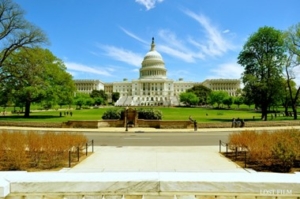
New economic paradigm—and policy—needed in the U.S. Government.
What U.S. federal agency is responsible for identifying and reducing the environmental and social costs of economic growth? None, really. The government has plenty of agencies and programs devoted to conservation, natural capital accounting, “green” industrial policy, and just transitions. But none address the elephant in the room: economic growth. Growth is what causes a nation’s ecological footprint to exceed its biocapacity.
To address this issue, in 2020 CASSE proposed a Full and Sustainable Employment Act (FSEA). Central to the FSEA was the establishment of a Commission on Economic Sustainability. Consistent with steady-state principles, the Commission entailed no net increase of bureaucracy. Rather, the Cabinet-level commissioners, led by the Secretary of the Interior, would simply refocus some of their duties on the matter of sustainable population and GDP.
The paradigm-shifting FSEA has evolved into the plainly titled Steady State Economy Act, carefully pieced together with “feeder bills.” The bill I introduce herein is the Commission on Economic Sustainability Act (CESA).
Growth is the Footprint
Economic growth results from the combined effects of changes to a country’s population and per capita consumption. Economic growth correlates tightly (and causally) with a higher throughput of materials and energy. Therefore, the overall size of an economy as represented by GDP gives a good indication of its broader ecological footprint.
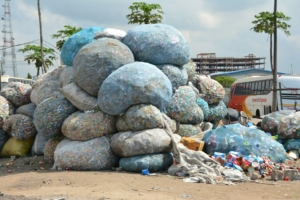
More growth, more waste. (Ryan Brooklyn, Unsplash)
Since the 1970s, the resource demands of the U.S. economy have overshot the country’s biocapacity. This “overshoot” threatens human wellbeing and the foundations of economic development more generally. To address the social and ecological perils connected to the swollen size of our economy, we must slow economic growth. And we must reduce the economy’s size to be consistent with our environment’s biocapacity.
For this reason policymakers need to focus on GDP in developing our nation’s sustainability strategy. In particular, they should understand what drives GDP growth and what could reduce it. This is because analyzing GDP reveals, in ways that analyses of natural capital or “ecological footprints” do not, the specifically economic drivers behind our ecological crises.
When combined with analyses of the nation’s biocapacity, we can evaluate how much we need to shrink GDP to fit within a “safe operating space” afforded by nature. GDP is already a familiar yardstick to policymakers and the public, and economists calculate it with exceptional rigor. Thus, GDP should be the prime metric for sustainability analysis and a key guide to sustainability initiatives in the United States and elsewhere.
Missing the Target
Most sustainability strategies do not identify the costs of economic growth, much less scale this growth back in a just way. Instead, they focus on reducing the symptoms of growth and advocate for actions like de-carbonization and “net-zero” goals. Others measure overshoot using natural capital accounting and by incorporating “planetary boundary” frameworks into policy planning decisions.
Missing are initiatives that forthrightly address a key driver of our ecological crisis—the economy’s unsustainable size. Nor do we have initiatives that identify viable and just strategies for reducing it. To be sure, scholars like Daniel O’Neill, Peter Victor, and Tim Jackson have developed models proposing policy routes toward a steady state economy. But these paths are generally developed in an academic context. They incorporate only a limited suite of policy tools. And they don’t address the full range of levers driving growth, from federal fiscal policies to planned obsolescence and bank-created money. They generally focus on “ideal-type” policies, rather than those that can be developed realistically within existing national legal landscapes.
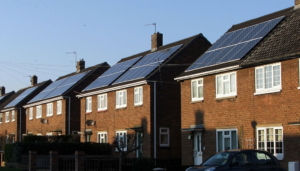
More solar panels won’t help much if consumption inside is growing. (Christine Westerback, Creative Commons 4.0)
Here is where a Commission on Economic Sustainability comes in. The Commission’s founding premise—a conclusion really—is the fundamental conflict between sustainability and growth. It would identify the federal policies and initiatives that promote this growth. It would calculate an optimal size for the economy as measured by GDP, based on the ecological requirements of the country and its citizens’ social needs. And it would develop a whole-of-government, 25-year strategy to reach this target in a way that maximizes fair redistribution and efficient allocation.
There are, of course, great difficulties involved in identifying the targets and strategies mentioned here. In part these difficulties are technical, including the challenge of identifying drivers of economic growth that are both granular and comprehensive. Others are ethical, such as identifying the material needs of the population while accounting for ecological health and personal freedom.
These difficulties, however, should not discourage us. We can tackle the ecological emergency only by addressing the forces driving it: the growth and size of our economy. The issues involved in tackling our civilizational challenge can be addressed through science and political debate. The Commission on Economic Sustainability is the agency that will keep us on track.
The Commission on Economic Sustainability Act
The Act establishes a government body responsible for measuring, monitoring, and coordinating federal efforts to reduce economic growth to environmentally and socially sustainable levels.
Section 2, “Findings and Declaration,” states that there is a fundamental conflict between economic growth and environmental protection. Because this conflict threatens both the economy and security of the United States, it is necessary to reduce growth through concerted federal activity. The section therefore declares that establishing a Commission on Economic Sustainability is in the interest of the United States.

A good Secretary of the Interior has the background, resources, and independence required to chair the Commission on Economic Sustainability. (U.S. DOI)
Section 4 establishes the Commission. The Secretary of the Interior will chair it, and members will include the Administrator of the Environmental Protection Agency and the Secretaries of Agriculture, Energy, and Commerce.
Section 5 directs the Commission’s Chair to produce a report identifying all federal activities that incentivize economic growth. Among the activities to be identified are funded and unfunded rules, regulations, policies, programs, laws, and initiatives implemented by all federal commissions, agencies, and departments.
Next, section 6 requires the Chair to produce a report identifying environmentally sustainable levels for the growth of population and GDP for the United States.
Section 7 directs the Chair to produce a report identifying a 25-year plan for establishing a steady state economy at the optimal levels of population and GDP established in Section 6.
Section 8 requires the Chair to produce a report summarizing the Commission’s activities and proposals, and to submit it to Congress annually.
The CESA is designed as a stand-alone bill and as a key component of the larger Steady State Economy Act. It addresses, as no other federal body currently does, the unsustainable growth that threatens national prosperity and security alike. And by identifying the drivers of this growth and coordinating government-wide strategies to reign them in, the CESA will help ensure a better, steady-state future for our people, nation, and planet.
Daniel Wortel-London is a CASSE Policy Specialist focused on steady-state policy development.

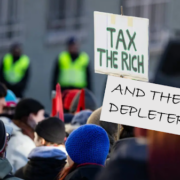


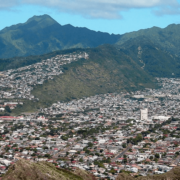


May I try to get this article printed on Medium?
Wow. Good work. I’m anxious to view the discussion.